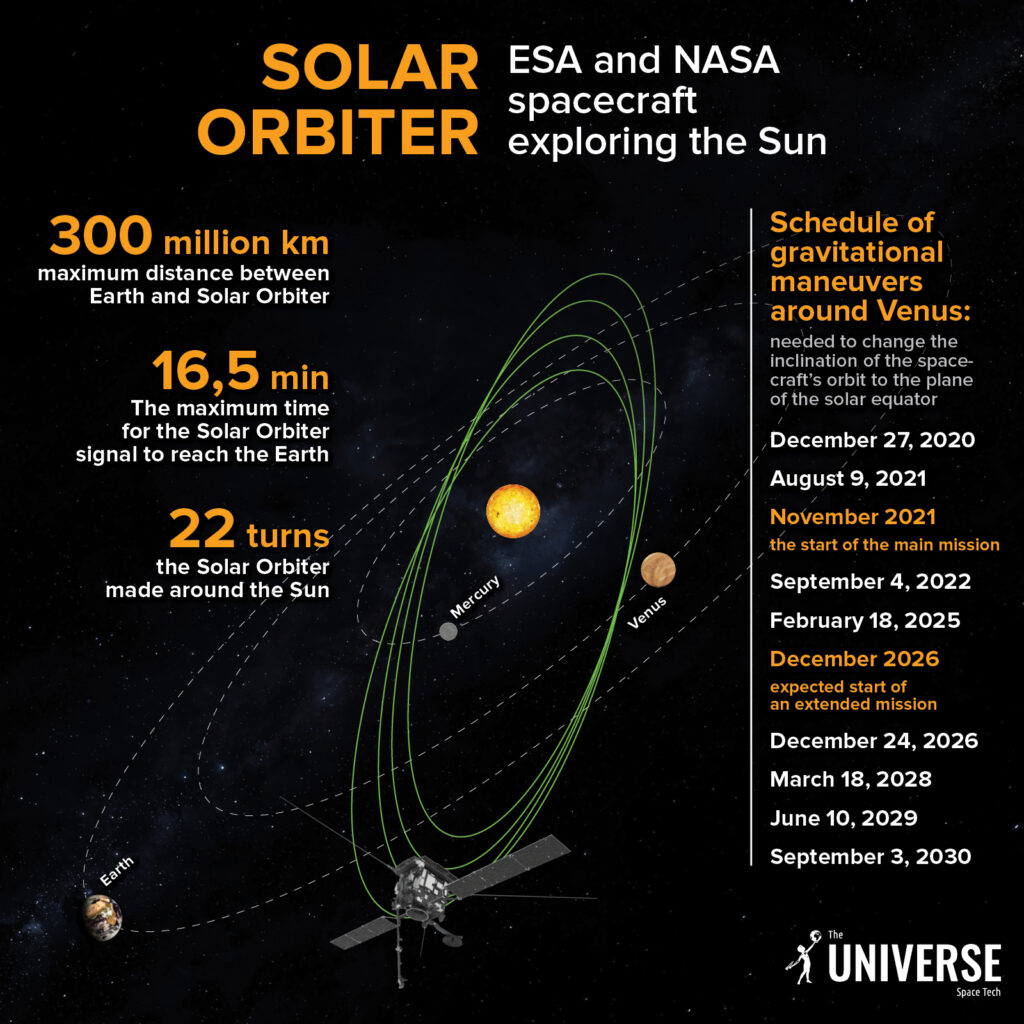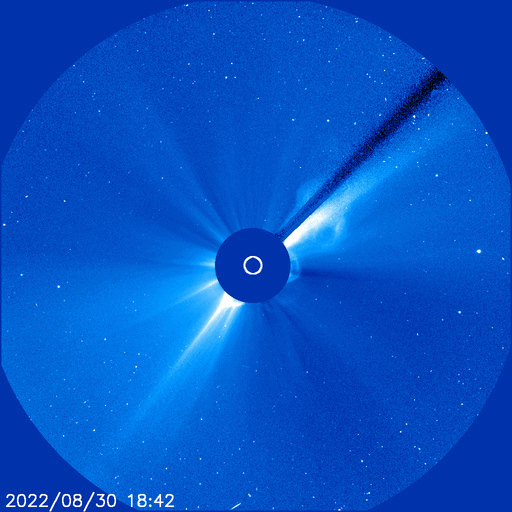Two days before the passage of Venus, the European-American probe Solar Orbiter encountered a coronal mass ejection. Currently, the mission staff is analyzing the data collected by the device.
On August 30, the Sun produced a large coronal ejection. It was thrown towards Venus. At the same time, the Solar Orbiter probe was heading towards the second planet from the Sun. It had to use the gravity of Venus to reduce the perihelion of its orbit.

On September 2, Solar Orbiter encountered a coronal ejection. Fortunately, the spacecraft was created with the expectation of opposing various manifestations of solar activity. Therefore, the ejection did not affect the operation of its onboard systems. Moreover, scientists have a unique opportunity to collect information about the solar storm and its interaction with Venus.
Improving the accuracy of space weather forecasts
The study of solar activity is one of the main tasks of the Solar Orbiter mission. Its data should shed light on the behavior of charged particles — mainly protons and electrons, as well as some ionized atoms, like helium. When particularly large flares and plasma emissions occur on the Sun, they are picked up and accelerated to almost relativistic speeds. It is these particles that create the main radiation hazard for astronauts and spacecraft.

In addition, scientists hope to improve understanding of the mechanism of formation and propagation of coronal emissions. This will help improve the accuracy of space weather forecasts and predict solar flares in advance.
Another significant problem is that it is quite difficult to determine the direction of movement of coronal ejections when observing from Earth. The fact is that the ejection moving directly towards our planet and moving away from it (from the “far” side of the Sun) look about the same. To solve this problem, ESA plans to launch the Vigil mission. Within its framework, a satellite will be launched to the Lagrange point L5 of the Sun-Earth system. Due to its position, it will observe our planet and the Sun “from the side”, which will determine the direction of movement of emissions.
According to https://www.esa.int
Follow us on Twitter to get the most interesting space news in time
https://twitter.com/ust_magazine

